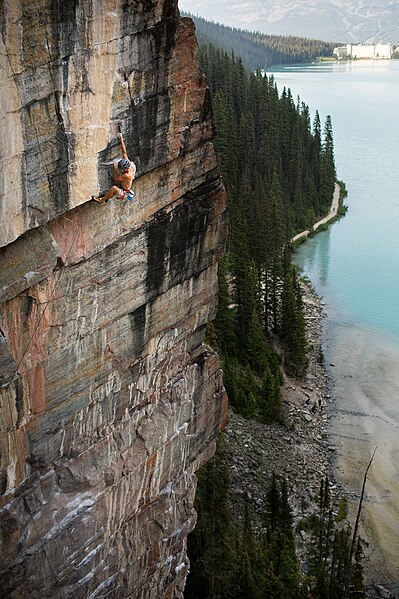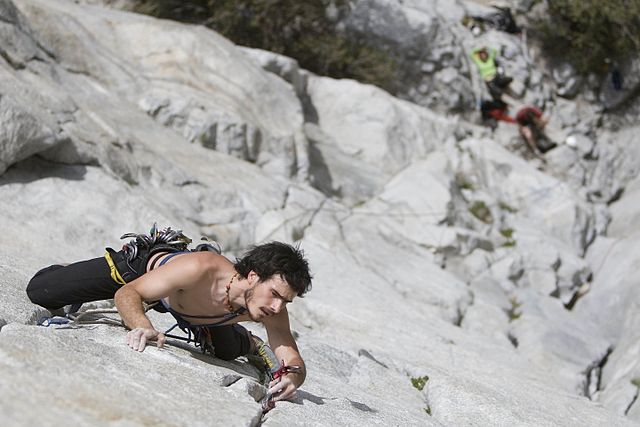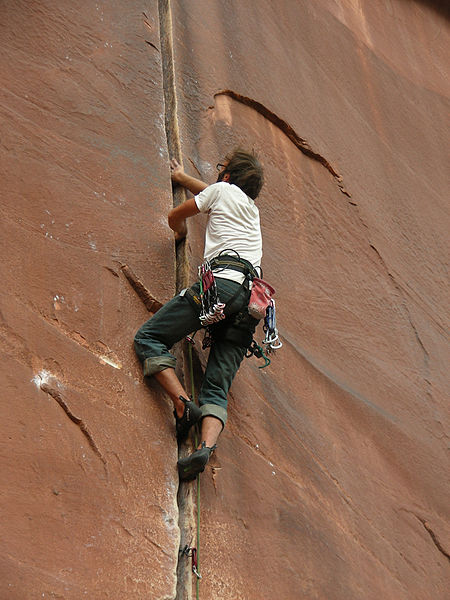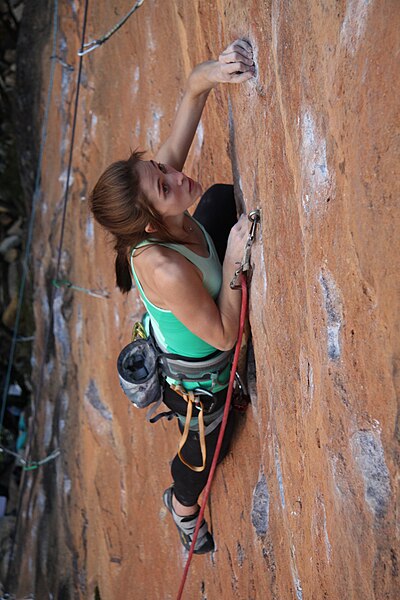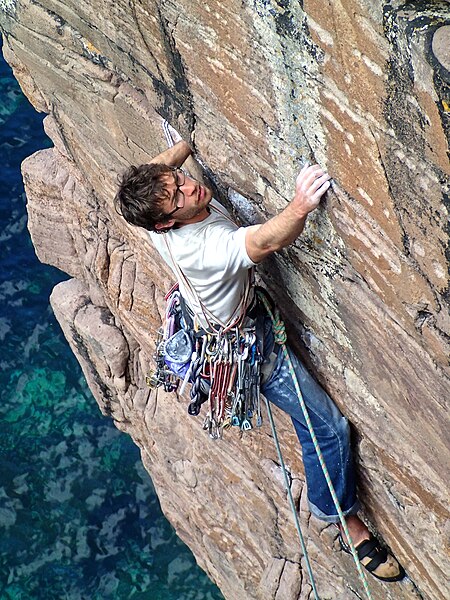Traditional climbing is a type of free climbing in rock climbing where the lead climber places the protection equipment while ascending the route; when the lead climber has completed the route, the second climber then removes the protection equipment as they climb the route. Traditional climbing differs from sport climbing where the protection equipment is pre-drilled into the rock in the form of bolts.
Climber leading a traditional climbing route, attempting to insert a nut for climbing protection.
Jonathan Siegrist on The Path 5.14a R, 8b+, at Lake Louise
Traditional climber inserting a spring-loaded camming device for their protection while leading Freeblast (5.11b), in Yosemite
Traditional climber leading Coyne Crack (5.11+), Indian Creek; the crack offers lots of opportunity for inserting climbing protection
Free climbing is a form of rock climbing in which the climber can only use climbing equipment for climbing protection, but not as an aid to help in their progression in ascending the route. Free climbing, therefore, cannot use any of the tools that are used in aid climbing to help overcome the obstacles encountered while ascending a route. The development of free climbing was an important moment in the history of rock climbing, including the concept and definition of what determined a first free ascent of a route by a climber.
Leading a sport climb
Leading a traditional climb
Free solo climbing
Bouldering


